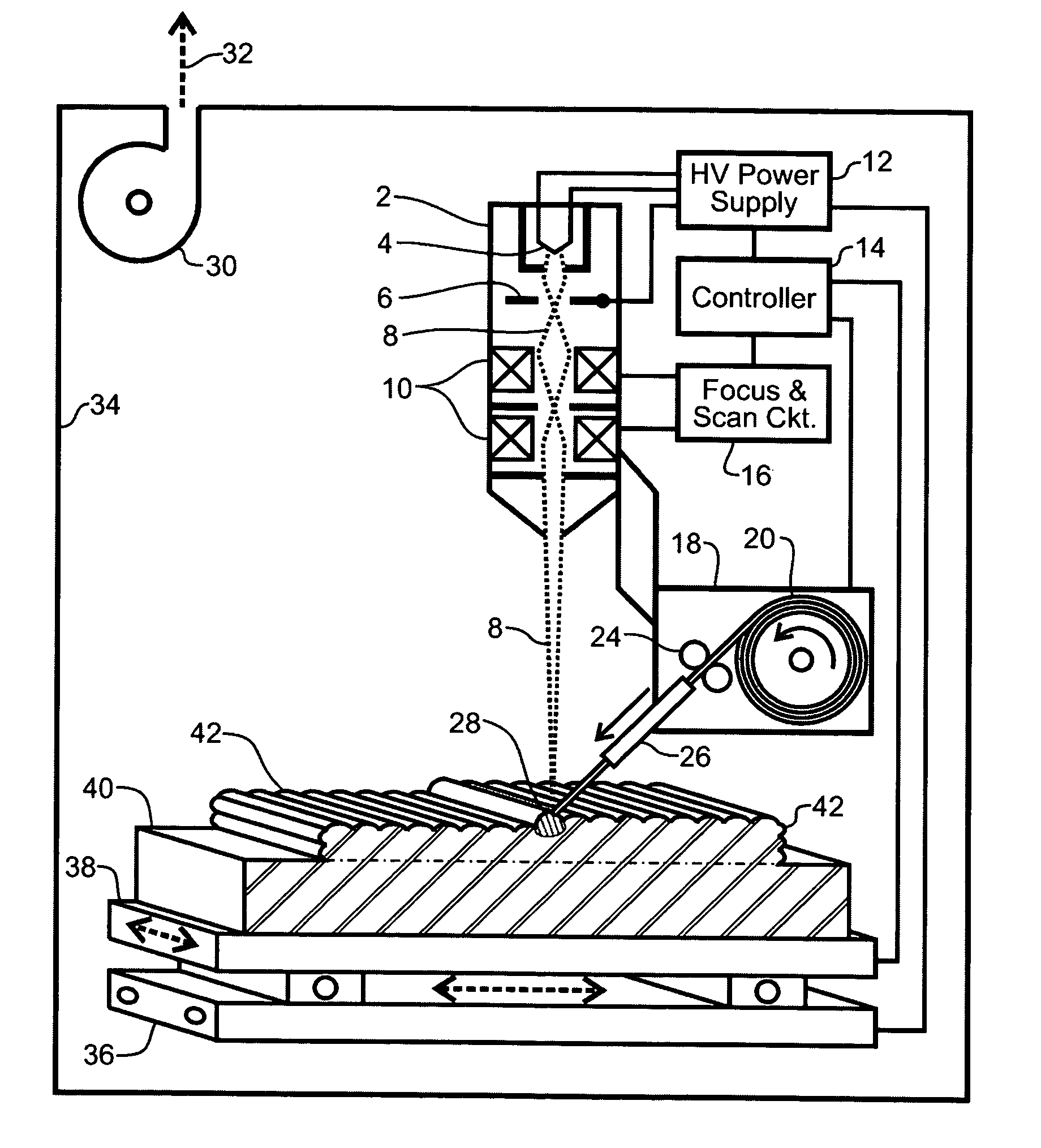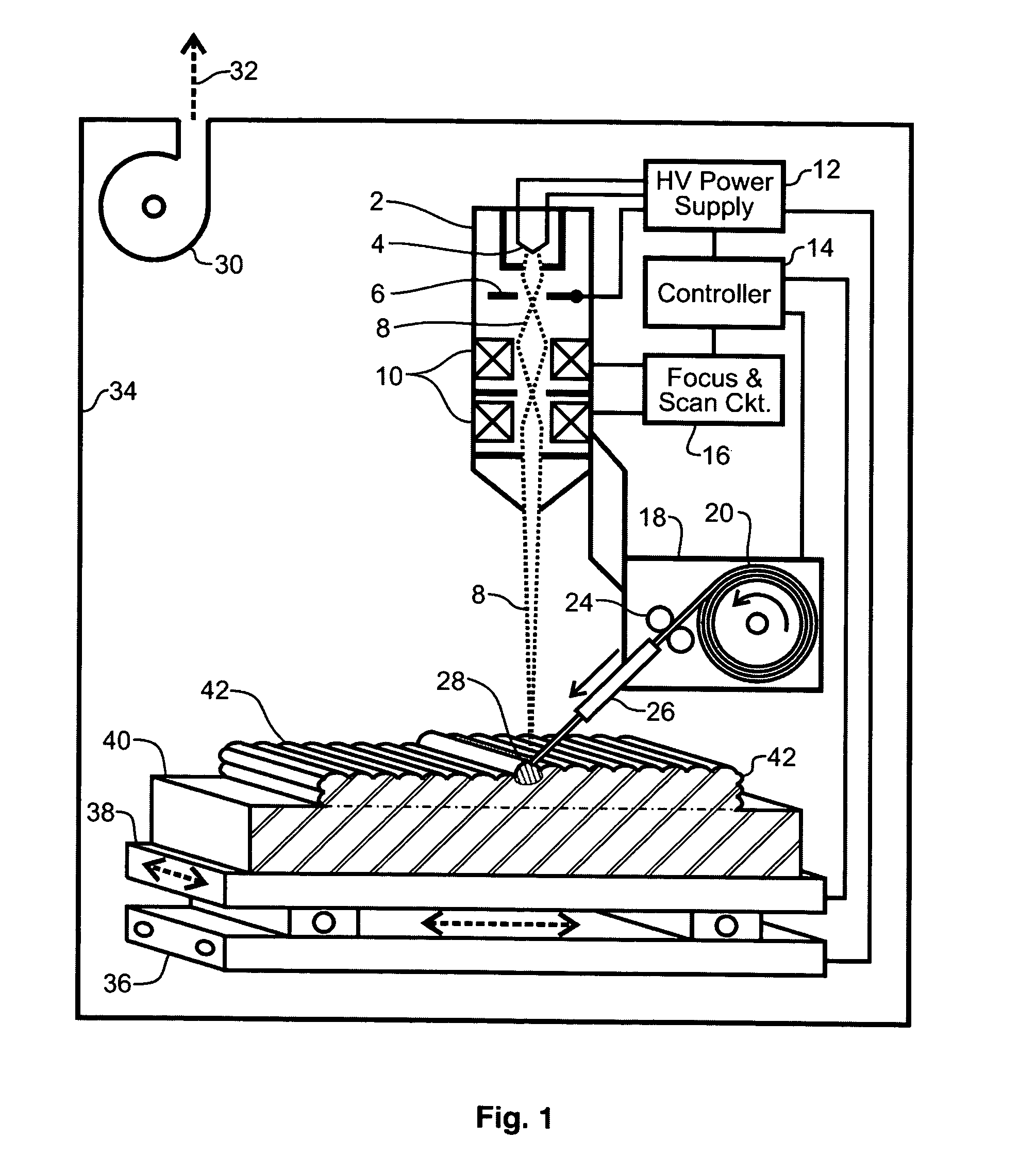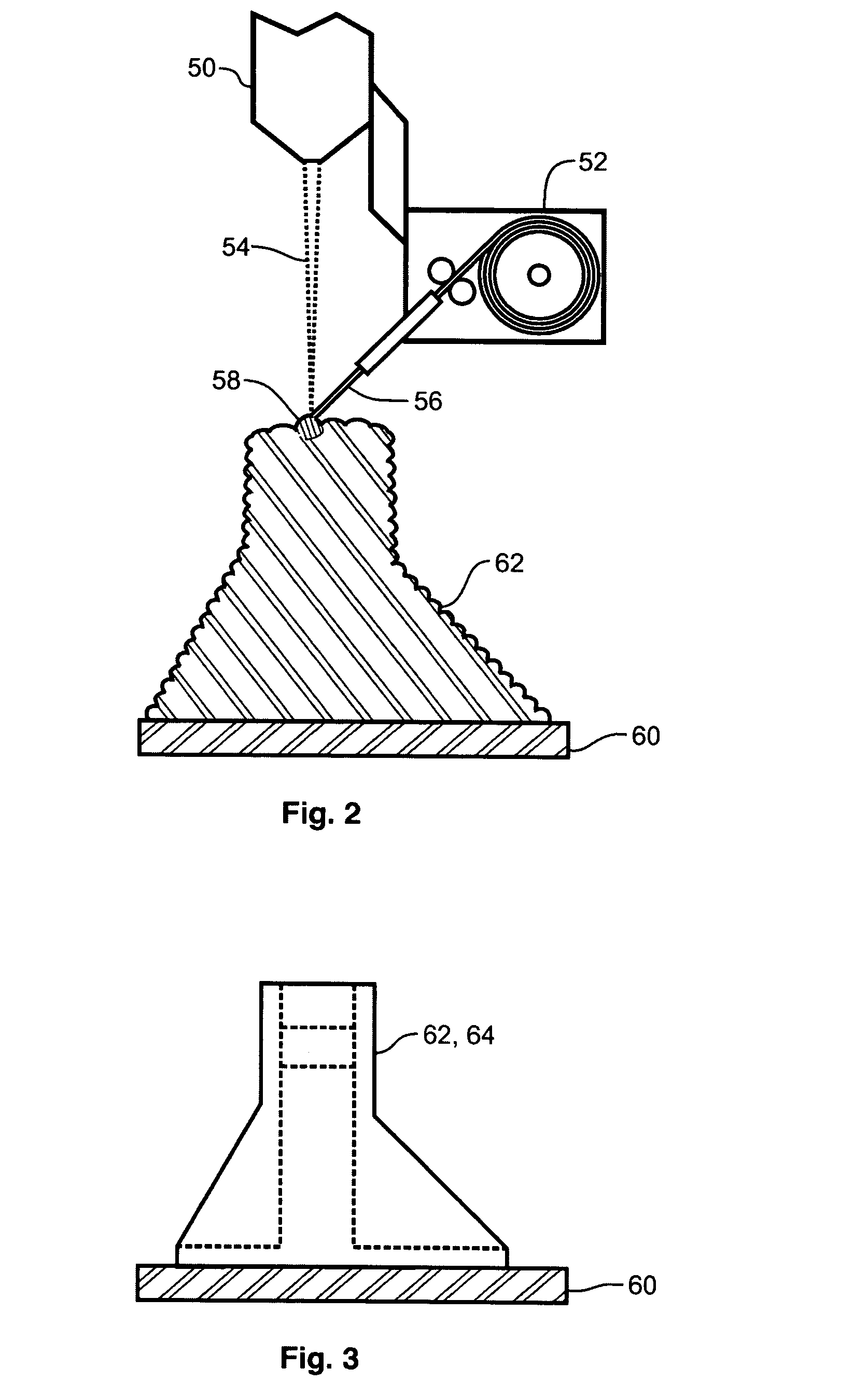Solid freeform fabrication system and method
a freeform and fabrication system technology, applied in the field of solid material fabrication, can solve the problems of reducing the density of the microstructure of the material, affecting the quality of the part,
- Summary
- Abstract
- Description
- Claims
- Application Information
AI Technical Summary
Problems solved by technology
Method used
Image
Examples
Embodiment Construction
[0069]Illustrative embodiments and exemplary applications will now be described with reference to the accompanying drawings to disclose the advantageous teachings of the present invention.
[0070]While the present invention is described herein with reference to illustrative embodiments for particular applications, it should be understood that the invention is not limited thereto. Those having ordinary skill in the art and access to the teachings provided herein will recognize additional modifications, applications, and embodiments within the scope thereof and additional fields in which the present invention would be of significant utility.
[0071]The present invention teaches a revolutionary advancement in the state of the art for solid freeform fabrication. An illustrative embodiment of the present invention system and method uses an electron beam as the heat source and wire as the feedstock material in the production of large, complex shape, metal parts conforming to a mold or layered...
PUM
| Property | Measurement | Unit |
|---|---|---|
| net weight | aaaaa | aaaaa |
| net weight | aaaaa | aaaaa |
| geometric volume | aaaaa | aaaaa |
Abstract
Description
Claims
Application Information
 Login to View More
Login to View More - R&D
- Intellectual Property
- Life Sciences
- Materials
- Tech Scout
- Unparalleled Data Quality
- Higher Quality Content
- 60% Fewer Hallucinations
Browse by: Latest US Patents, China's latest patents, Technical Efficacy Thesaurus, Application Domain, Technology Topic, Popular Technical Reports.
© 2025 PatSnap. All rights reserved.Legal|Privacy policy|Modern Slavery Act Transparency Statement|Sitemap|About US| Contact US: help@patsnap.com



